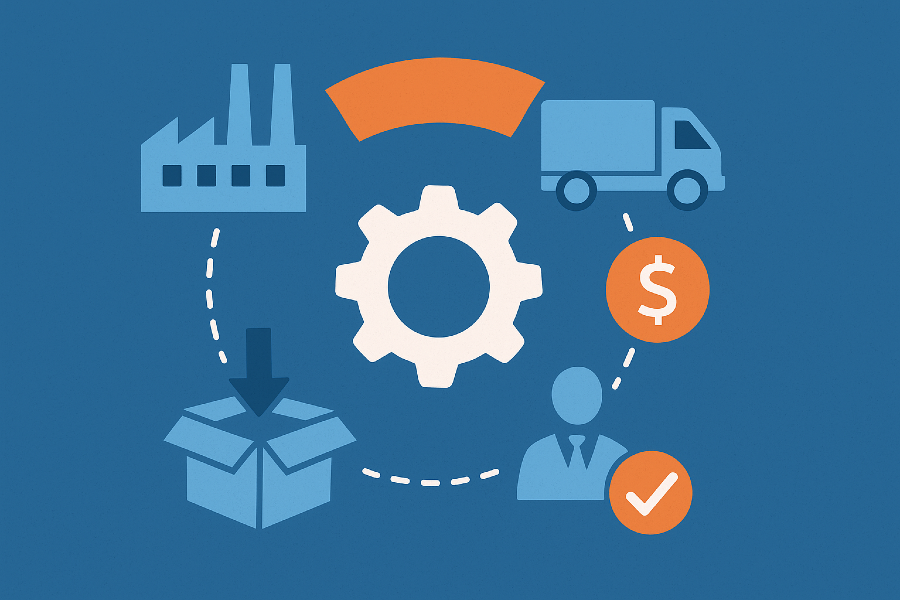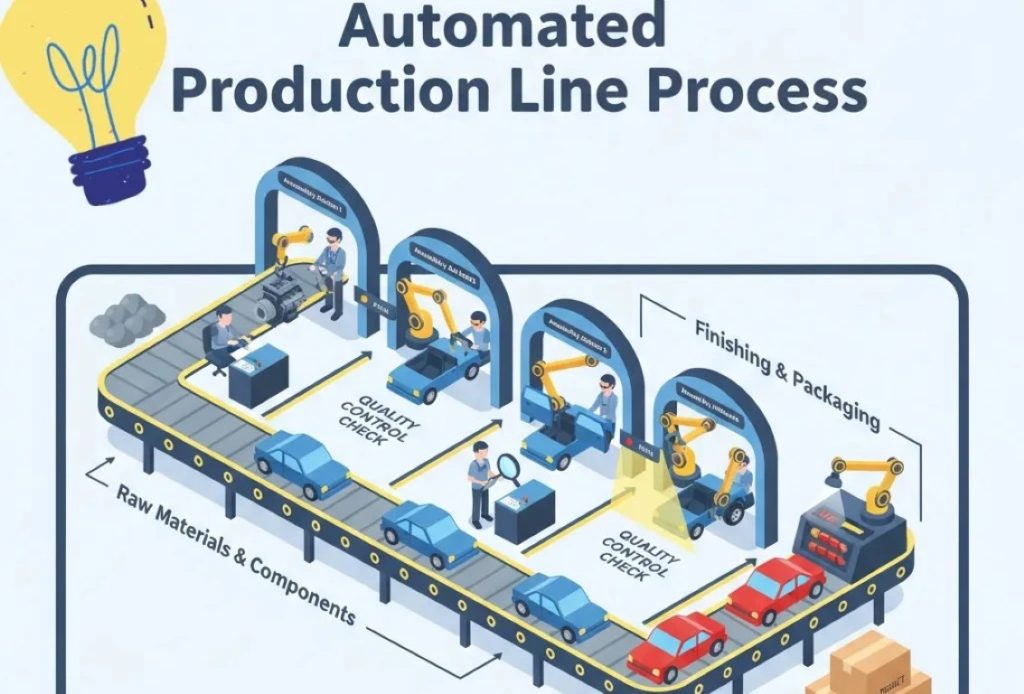In the ever-evolving landscape of the pharmaceutical industry, efficient management of resources, processes, and data has become paramount. Enter ERP (Enterprise Resource Planning) systems, a revolutionary solution that has revolutionized how pharmaceutical companies operate.
This comprehensive guide delves into the intricate realm of ERP for the pharmaceutical industry, exploring its pivotal role in streamlining operations, ensuring regulatory compliance, enhancing quality control, and optimizing supply chains.
From the complexities of batch tracking to the integration of research, production, and distribution, this guide will navigate you through the nuanced benefits and challenges that ERP systems bring to the forefront of pharmaceuticals.

Overview of ERP for Pharmaceutical Industry
ERP systems have a pivotal function in optimizing operations within the pharmaceutical sector, guaranteeing effective resource administration and adherence to rigorous regulations. These solutions amalgamate diverse functions, ranging from research and development to manufacturing and distribution. This integration is upheld while also upholding the security and consistency of data. Some of the key features of ERP for the Pharmaceutical Industry are listed below :
- Regulatory Compliance Management
ERP systems in the pharmaceutical sector must adhere to complex regulatory frameworks. They enable tracking and documentation of compliance-related activities, ensuring that processes adhere to guidelines set by agencies like the FDA or EMA.
- Batch Tracking and Serialization
ERP systems facilitate tracking of batches from production to distribution, enabling quick identification and resolution of issues. Serialization features help prevent counterfeiting and enhance supply chain security.
- Inventory Management
Effective management of raw materials, active ingredients, and finished products is critical in pharmaceuticals. ERP systems monitor inventory levels, trigger reordering when necessary, and prevent stock outs or overstock situations.
- Quality Control
Maintaining product quality is paramount. ERP systems provide tools for quality control testing, ensuring that products meet set standards. They help manage quality data, audits, and deviations, supporting consistent quality assurance.
- Research and Development Support
ERP systems aid in managing the R&D process, from ideation to clinical trials. They facilitate collaboration among researchers, documentation of experiments, and monitoring of trial progress.
- Demand Forecasting
Accurate demand forecasting is crucial to avoid excess inventory or stock shortages. ERP systems analyze historical data, market trends, and external factors to provide insights for more accurate demand predictions.
- Supplier Relationship Management
Pharmaceutical manufacturers rely on a network of suppliers for raw materials. ERP systems enhance supplier collaboration by managing procurement processes, tracking supplier performance, and ensuring timely deliveries.
Incorporating these key features, ERP systems tailored for the pharmaceutical industry optimize operations, enhance data visibility, and uphold the industry’s rigorous regulatory and quality standards.
Step by Step Working of ERP in Pharmaceutical Industry
Enterprise Resource Planning (ERP) systems play a pivotal role in optimizing operations within the pharmaceutical industry. These integrated software solutions facilitate seamless management of various processes, ensuring compliance, efficient resource utilization, and improved decision-making. The implementation of ERP in the pharmaceutical sector follows a structured approach encompassing the following ten steps:
Step 1: Business Process Analysis
This initial phase thoroughly analyzes the pharmaceutical company’s existing processes and workflows. It aims to identify inefficiencies, gaps, and areas that can benefit from automation and integration. Understanding the intricacies of tasks, such as research and development, manufacturing, quality control, distribution, and regulatory compliance, forms the foundation of ERP implementation.
Step 2: Requirement Definition
Based on the analysis, a comprehensive list of business requirements is generated. This step involves collaboration among cross-functional teams to ensure that the ERP system aligns with the specific needs of different departments within the pharmaceutical organization. Customization needs, user roles, data integration, and regulatory compliance are documented.
Step 3: Vendor Selection
Choosing the right ERP vendor is crucial. It is vital to evaluate vendors based on their track record, industry-specific solutions, scalability, support, and regulatory compliance capabilities. Pharmaceutical organizations often need ERP systems that adhere to industry regulations, such as GMP (Good Manufacturing Practices) and FDA guidelines.
Step 4: System Customization and Configuration
During this phase, the chosen ERP solution is tailored to meet the pharmaceutical company’s unique requirements. Customizations can include configuring modules for research data management, batch processing, quality documentation, regulatory reporting, and serialization for traceability.
Step 5: Data Migration
Migrating existing data from legacy systems to the new ERP platform requires meticulous planning and execution. Data integrity and consistency are paramount to ensuring that critical information about drug formulations, clinical trials, and regulatory submissions remains accurate.
Step 6: User Training
Comprehensive training programs are designed for end-users across various departments. This ensures that employees are proficient in using the ERP system effectively. Training covers navigation, data entry, report generation, and adherence to compliance protocols.
Step 7: Testing and Validation
Thorough testing and validation are essential to ensure that the ERP system functions as intended and adheres to regulatory standards. Validation processes include verifying data accuracy, system functionality, and the integrity of processes such as batch manufacturing and quality control.
Step 8: Go-Live and Deployment
The ERP system is officially launched across the organization. The deployment includes data migration, consistency, and resolution of last-minute technical issues. A carefully planned transition minimizes disruptions to ongoing operations.
Step 9: Ongoing Support and Maintenance
After implementation, continuous technical support, software updates, and maintenance are provided by the ERP vendor. This ensures the system remains up-to-date and responsive to evolving business needs and regulatory changes.
Step 10: Performance Evaluation and Optimization
Regular reviews of the ERP system’s performance are conducted to identify areas for improvement. Data analytics and key performance indicators (KPIs) help evaluate the system’s impact on operational efficiency, compliance, and overall business outcomes. Adjustments and optimizations are made accordingly to maximize the benefits of the ERP solution.
In summary, implementing an ERP system within the pharmaceutical industry is a comprehensive process encompassing business analysis, system selection, customization, data migration, training, testing, and ongoing support. This systematic approach ensures that pharmaceutical organizations can streamline operations, maintain compliance, and adapt efficiently to industry challenges.
Types of Pharmaceutical Industry
The field of pharmaceuticals plays a vital role in healthcare, involving essential functions such as exploration, innovation, production, and dissemination of medications aimed at averting, curing, and controlling a wide array of medical ailments.
This sector comprises a diverse spectrum of divisions, each dedicated to distinct facets of pharmaceuticals. From the investigation and advancement phase to the manufacturing and dispersal stage, the pharmaceutical sector is segmented into numerous pivotal categories, each characterized by its distinctive emphasis and objective.
- Research and Development
This field stands at the vanguard of drug exploration and advancement. It encompasses thorough scientific investigation to pinpoint potential drug objectives. Subsequent to this is the phase of preclinical examination and clinical trials aimed at evaluating both safety and effectiveness. The research and development process also entails an analysis of possible adverse effects and interplays, alongside the enhancement of the composition and administration protocols for novel medicinal agents.
- Generic Pharmaceuticals
Generic pharmaceutical firms manufacture drugs that are the same as or equivalent to branded medications that have already been authorized and are no longer protected by patents. These businesses can produce generics at a reduced expense, offering more economical choices for consumers and healthcare systems.
- Biopharmaceuticals
Biopharmaceuticals are sourced from living organisms or cells and are employed for the treatment of intricate illnesses like cancer, autoimmune disorders, and genetic conditions. This field encompasses elaborate procedures such as utilizing recombinant DNA technology to manufacture proteins, monoclonal antibodies, and gene therapies.
- Contract Manufacturing Organizations (CMOs
CMOs provide pharmaceutical companies without their own manufacturing capabilities with a comprehensive range of services. These services encompass the entire process, starting from drug formulation and extending to packaging. The CMOs follow stringent quality and regulatory guidelines to ensure that the products they produce fulfill the necessary criteria for safety and effectiveness.
- Contract Research Organizations (CROs)
Contract Research Organizations (CROs) offer a wide range of research solutions to pharmaceutical companies. These solutions encompass the design and execution of clinical trials, meticulous data collection and analysis, as well as the adept management of regulatory adherence. Their pivotal role in expediting the drug development journey remains indisputable.
- Pharmaceutical Distribution and Wholesale
This industry plays a crucial role in the effective transportation of medications from their manufacturers to various pharmacies, hospitals, and clinics. In this capacity, they manage complex supply networks to ensure the timely and accurate availability of medications, while also maintaining adherence to regulatory benchmarks.
- Pharmaceutical Marketing and Sales
The marketing and sales sector focuses on promoting pharmaceutical products to healthcare professionals and consumers. This involves developing marketing strategies, educating healthcare providers about new treatments, and creating awareness among the public.
- Pharmaceutical Regulatory Affairs
Regulatory affairs professionals ensure that pharmaceutical products meet the requirements set by regulatory agencies. They navigate complex approval processes, compile necessary documentation, and ensure that products are manufactured, labeled, and distributed according to regulatory standards.
- Pharmaceutical Packaging and Labeling
Proper packaging and labeling are vital to ensure that medications remain effective and are used safely. This sector involves designing packaging that preserves a drug’s stability, prevents contamination, and provides clear instructions for use.
All these sectors play a crucial role in the holistic functioning of the pharmaceutical industry, spanning from initial research and development to the eventual distribution of medicines to patients. The synergy between these sectors is vital to guarantee the creation, production, and availability of innovative and reliable treatments for those in need.
Conclusion
In the ever-evolving realm of the pharmaceutical sector, the importance of a streamlined ERP (Enterprise Resource Planning) system cannot be overstated in achieving success. This comprehensive guide has highlighted the crucial role of ERP in streamlining processes, ensuring compliance, and enhancing overall operational efficiency within the pharmaceutical industry.
To maximize these benefits, consider partnering with Qodenext, a leading ERP solution provider tailored to the pharmaceutical sector’s unique needs. With their expertise and specialized features, such as batch tracking and regulatory compliance modules, Qodenext empowers pharmaceutical companies to thrive in a highly regulated environment. Embrace the future of pharmaceutical management with Qodenext’s ERP solutions for the pharmaceutical industry. Explore the possibilities today and transform your operations for lasting success.







